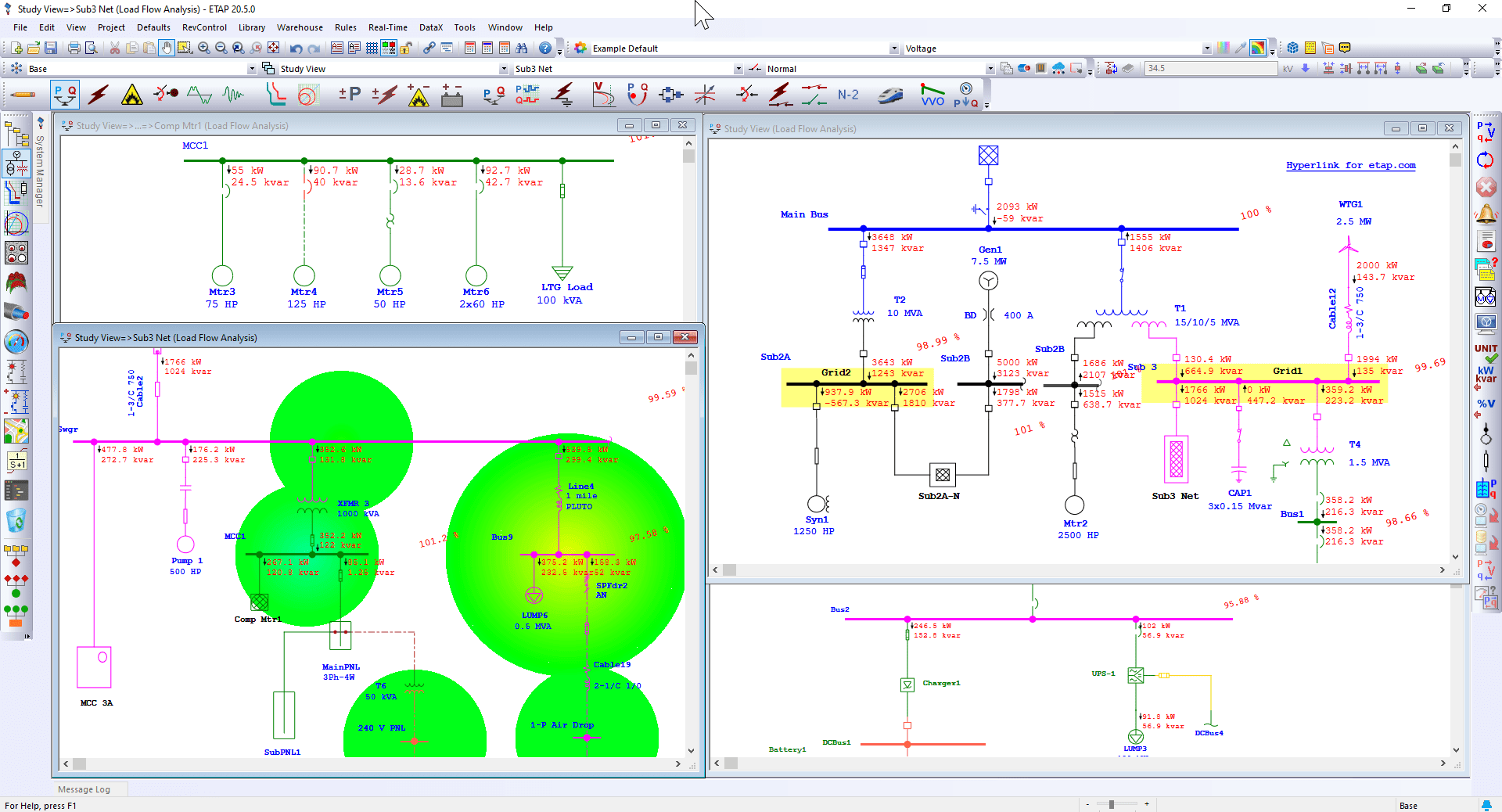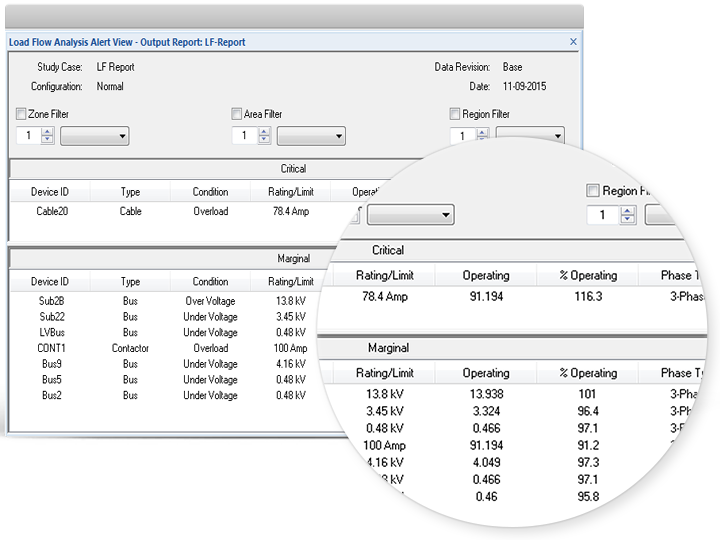
Load Flow Study is a fundamental step in the design and operation of electrical systems. This process involves calculating and simulating how current and power flow throughout the entire electrical network—from power sources to loads—to ensure stable, efficient, and safe performance
Why Is Load Flow Study Essential?
In reality, Electrical systems are constantly evolving: loads increase, generation sources change, and network structures are modified or expanded. Without Load Flow Analysis, designing or operating the system becomes guesswork, relying solely on assumptions or experience—which can lead to serious issues, such as:
- Overloading of transmission lines or transformers
- Severe Voltage Drops at points distant from the source
- Voltage Instability that can damage equipment
- Significant Energy Losses, resulting in high operating cost


Benefits of Load Flow Analys
- Power Flow distribution across the system
Identify current, voltage, active power, and reactive power at each node and branch within the electrical system. - Operational condition assessment
Evaluate voltage levels at nodes, detect overloads, voltage drops, or violations of technical limits. - Operation and maintenance planning
Support decisions on load shedding, power generation, or grid configuration to ensure stable operations and optimal performance. - Foundation for system optimization
Analyze energy losses and operational efficiency, as well as evaluating the system’s ability to manage current loads and support future expansion.

Outcomes Of Load Flow Study
- Detailed report explaining the input data, study cases, observations and recommendations
- Presentation to easily spot out abnormal conditions like voltage limit violations, overloading conditions, and improper continuous rating selections.
- Proposing applicable solutions to address the issues. (Example – Power factor correction devices, Reactive power support devices)
- Base simulation model for short-circuit, stability, motor starting, and harmonic, and protection studies.


 Tiếng Việt
Tiếng Việt


